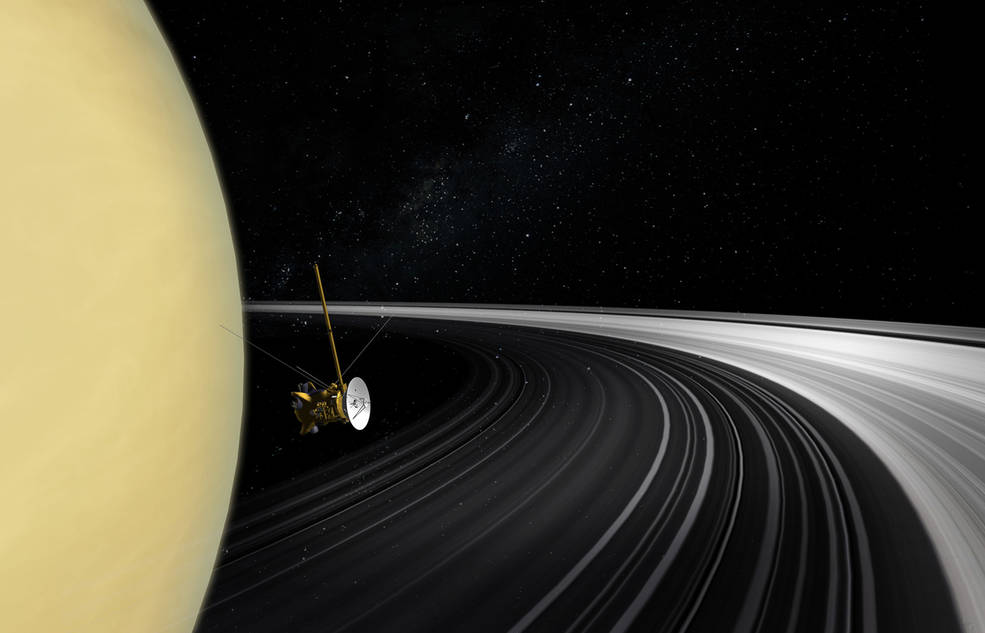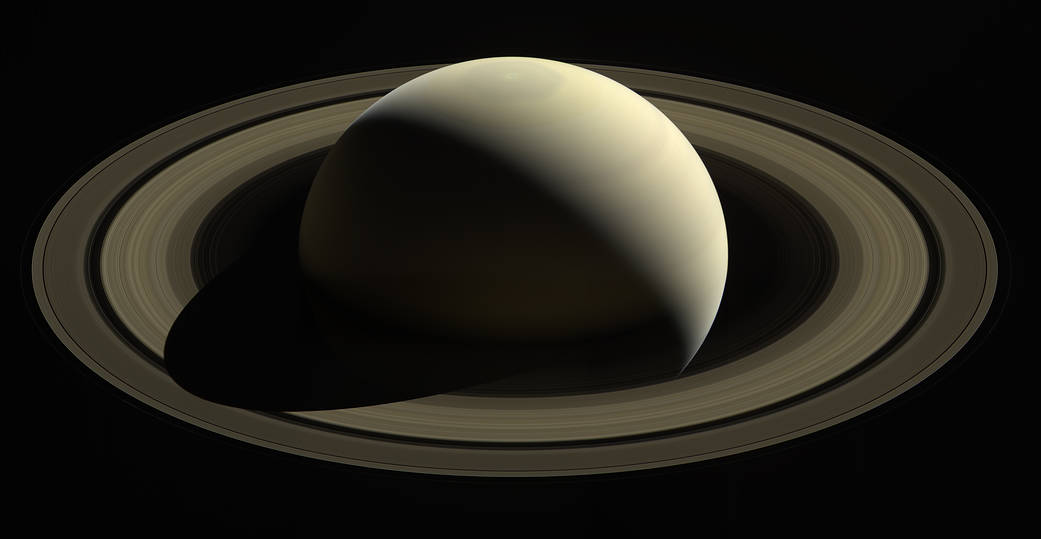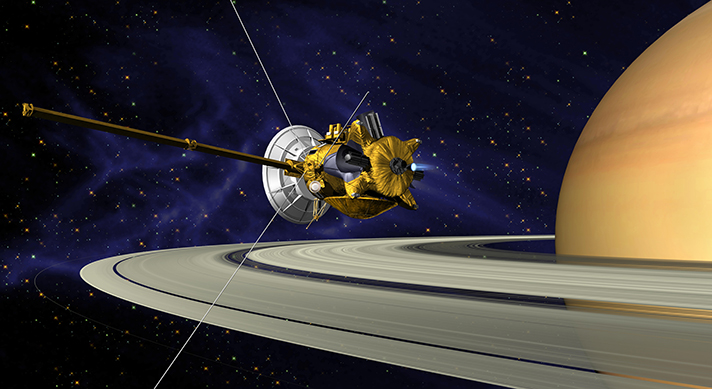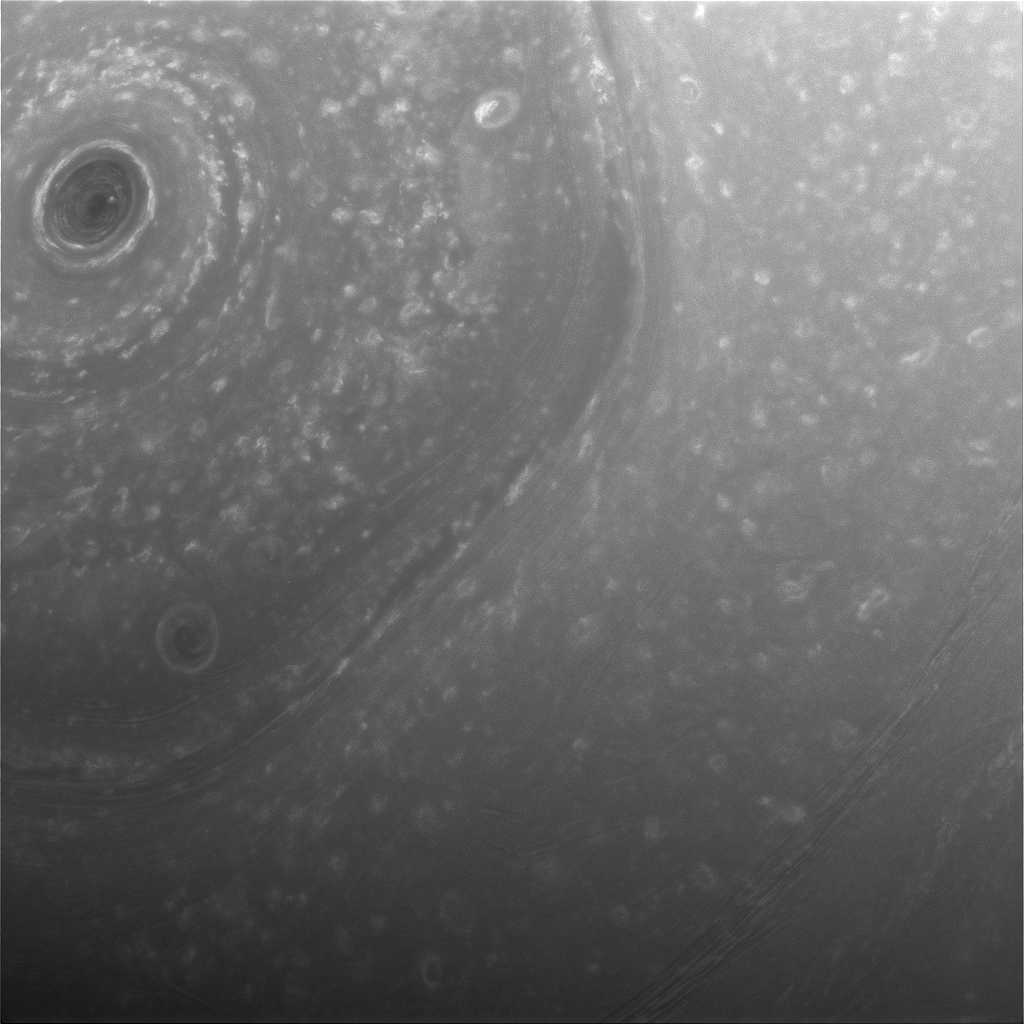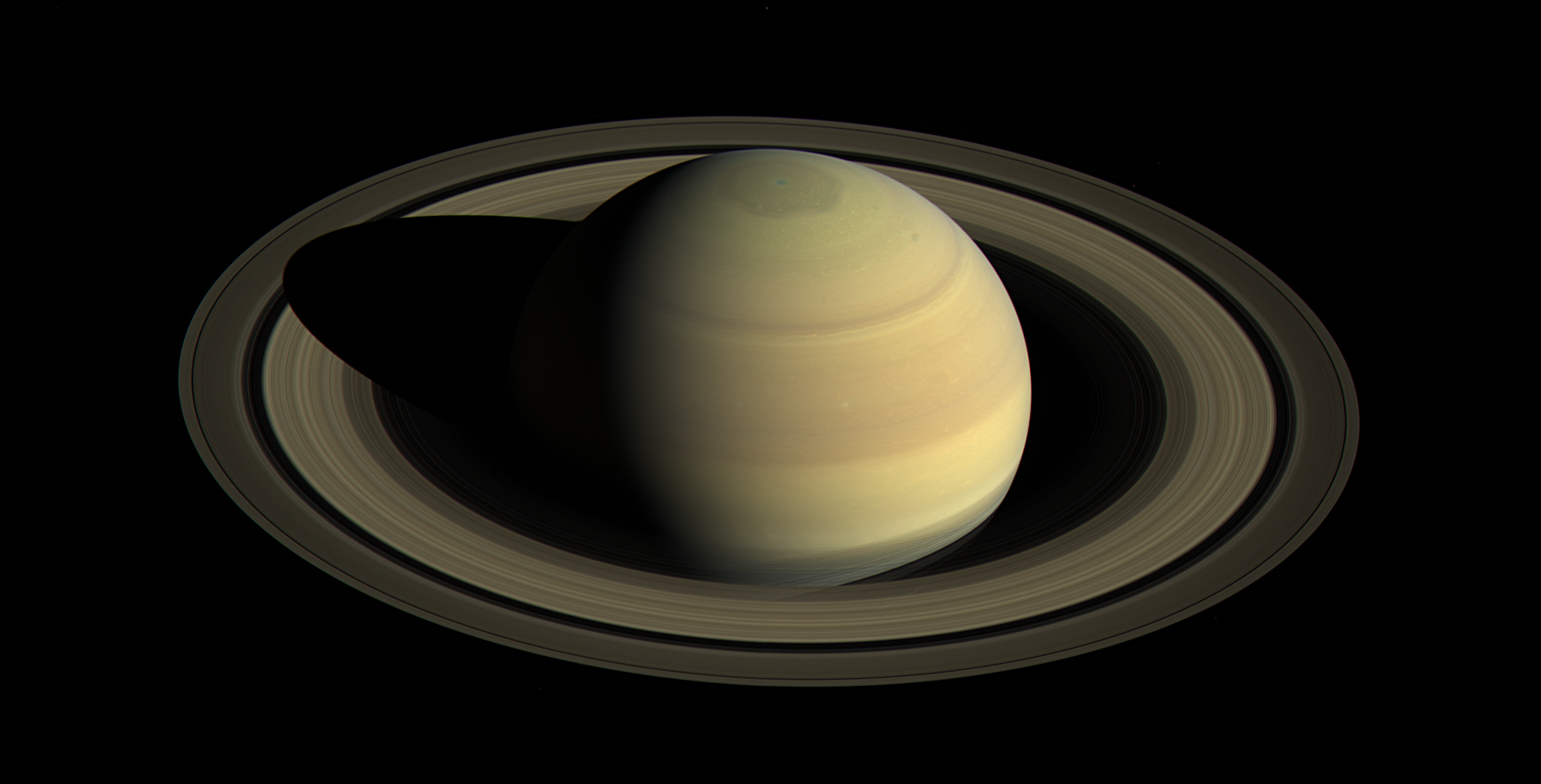NASAは土星探査カッシーニの観測データを分析した結果、土星の環が生成されたのは土星本体に対して比較的新しいという説の裏付けとなると発表しました。
土星本体はおおよそ45億年前に形成されたと考えられています。
一方で、土星の環は1000万年から1億年前に形成されたということです。
詳細はNASAの記事をご覧ください。(和訳は参考です)
NASA’s Cassini Data Show Saturn’s Rings Relatively New
NASAのオリジナル記事:https://www.nasa.gov/feature/jpl/nasas-cassini-data-show-saturns-rings-relatively-new
画像はNASA/JPLによるイメージ画像です。Credits: NASA/JPL-Caltech
The rings of Saturn may be iconic, but there was a time when the majestic gas giant existed without its distinctive halo. In fact, the rings may have formed much later than the planet itself, according to a new analysis of gravity science data from NASA’s Cassini spacecraft.
土星の環はまさに土星の象徴そのものでもあるのですが、かつてこの環が無い巨大なガス天体であった時代もありました。事実土星の環は、土星本体が形成されたよりもかなり後になって出来たと、NASAの探査機カッシーニの重力分析結果から新たにわかりました。
The findings indicate that Saturn’s rings formed between 10 million and 100 million years ago. From our planet’s perspective, that means Saturn’s rings may have formed during the age of dinosaurs.
観測結果は土星の環が1000万年から1億年前に形成されたことを示しています。私たちの地球の視点でみると、地球では恐竜が生きていた時代に 土星の環が形成されたかもしれないということになります。

The conclusions of the research — gleaned from measurements collected during the final, ultra-close orbits Cassini performed in 2017 as the spacecraft neared the end of its mission — are the best answer yet to a longstanding question in solar system science. The findings were published online Jan. 17 in Science.
探査機がそのミッションの終わりに近づいた2017年に行われた最後の超接近軌道の際に観測されたデータによる研究の結論は – 太陽系に関する長年の疑問に対するベストな解答となりました。調査結果は1月17日のサイエンス誌で発表されました。
Saturn formed 4.5 billion years ago, in the early years of our solar system. There have been clues that its ring system is a young upstart that attached to Saturn years afterward. But how long afterward?
土星は、太陽系の初期段階の45億年前に形成されました。その土星に輪が出来上がったのは若い時代(土星が形成されてから後の時代)であるだろうと考えられていました。しかし、それは一体どのくらい後なのでしょうか?
To figure out the age of the rings, scientists needed to measure something else: the mass of the rings, or how much material they hold. Researchers had the remote-sensing measurements from Cassini and both of NASA’s Voyager spacecraft in the early 1980s. Then came Cassini’s unprecedented, up-close data from its final orbits. As the spacecraft was running out of fuel, it performed 22 dives between the planet and the rings.
土星の環が形成された年代を把握するために、科学者たちは何か他のものを測定する必要がありました。1980年代初頭にNASAのカッシーニとボイジャーの2つの探査機から遠隔測定の観測を行いました。それから、カッシーニが最後の軌道からの前例のない超接近観測したデータを得ることができました。カッシーニが燃料を使い果たすまでの間、土星と土星の環の間を22回も通過したのでした。

The dives allowed the spacecraft to act as a probe, falling into Saturn’s gravity field, where it could feel the tug of the planet and the rings. Radio signals sent to Cassini from the antennas of NASA’s Deep Space Network and the European Space Agency relayed the spacecraft’s velocity and acceleration.
探査機が土星と土星の環の間の空間を通過することで土星と土星の環が互いに引き合っているような感じの重力場を観測することができたのです。NASAの深宇宙ネットワークと欧州宇宙機関のアンテナからカッシーニに送信された無線通信で探査機の速度と加速を制御しました。
Once scientists knew how much gravity was pulling on Cassini, causing it to accelerate — down to a fraction of a millimeter per second — they could determine how massive the planet is and how massive the rings are.
科学者たちは、カッシーニがどの位の力で引っ張られるのかを – 毎秒数ミリメートルまで – 観測することができたので、その結果をもとに土星本体の大きさと土星の環の大きさを算出することができたのです。
“Only by getting so close to Saturn in Cassini’s final orbits were we able to gather the measurements to make the new discoveries,” said Cassini radio science team member and lead author Luciano Iess, of Sapienza University of Rome. “And with this work, Cassini fulfills a fundamental goal of its mission: not only to determine the mass of the rings, but to use the information to refine models and determine the age of the rings.”
ローマのサピエンツァ大学のカッシーニラジオサイエンスチームのメンバーであり、執筆者のルチアーノ・イース氏は、「カッシーニの最終軌道で土星に近づくことによって初めて、新しい発見につながる観測結果を得ることができたのです。」と述べました。 「そしてカッシーニはそのミッションの基本的な目標を達成しました。それは土星の環の質量を決定するだけでなく、土星の環の形成過程のモデルを見直して形成年代の特定をするための情報を提供することです。」

Iess’ paper builds on a connection scientists previously made between the mass of the rings and their age. Lower mass points to a younger age, because the rings, which are bright and mostly made of ice, would have been contaminated and darkened by interplanetary debris over a longer period. With a better calculation of ring mass, scientists were better able to estimate the rings’ age.
イース氏の論文は、以前から考えられてきた土星の環の質量と形成年代の関係の上に成り立っています。より質量の小さな環は形成年代も若いと考えられます。なぜならそれらの輪は、より明るく、主に氷でできています。形成年代が古ければ、長い年月にわたって惑星間のゴミや塵によって汚れて暗くなっているはずだからです。土星の環の質量をより正確に算出できたことで、科学者たちは環の形成年代をより良く推定することができました。
Saturn scientists will continue work to figure out how the rings formed. The new evidence of young rings lends credence to theories that they formed from a comet that wandered too close and was torn apart by Saturn’s gravity — or by an event that broke up an earlier generation of icy moons.
土星を研究している科学者たちは、土星の環がどのように形成されたかを明確にすべく研究を続けています。土星の環の形成が比較的若いということの新たな根拠は、あまりにも土星に接近しすぎた彗星が土星の重力によってバラバラにされた – または初期の氷の状態の衛星が崩壊した、という理論を裏付けることになりました。
Gretchen McCartney
Jet Propulsion Laboratory, Pasadena, Calif.
818-393-6215
gretchen.p.mccartney@jpl.nasa.gov
JoAnna Wendel
NASA Headquarters, Washington
202-358-1003
joanna.r.wendel@nasa.gov
2019-004
Last Updated: Jan. 18, 2019
Editor: Tony Greicius
